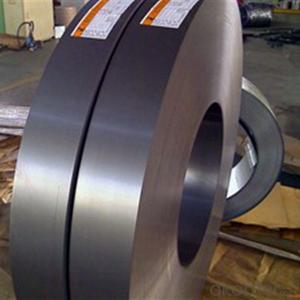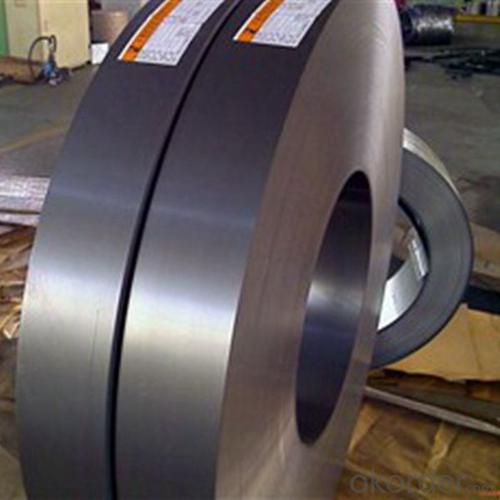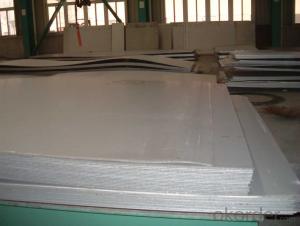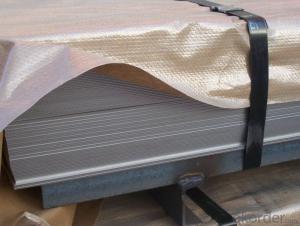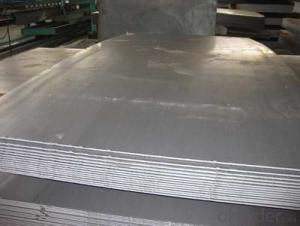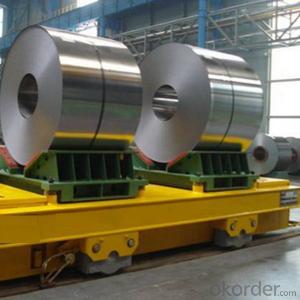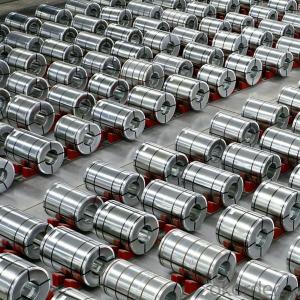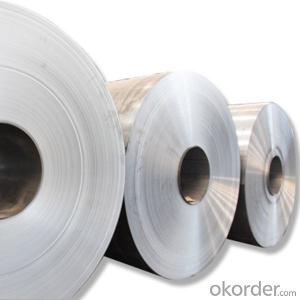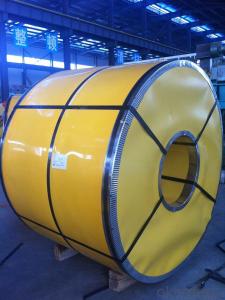Stainless Steel Cold Rolled Stainless Plates NO.2B Finish
- Loading Port:
- Tianjin
- Payment Terms:
- TT OR LC
- Min Order Qty:
- 25 m.t.
- Supply Capability:
- 200000 m.t./month
OKorder Service Pledge
OKorder Financial Service
You Might Also Like
Specification
Specifications for Stainless Steel Coils/Sheets:
Type | 200 series,300 series,400 series |
Thickness | 1.8-8.0mm |
Widthness | 1000/1219/1500mm |
Technique | Hot Rolled/Cold Rolled |
Coil Weight | About 20 Tons |
Finish | NO.1/NO.2B |
Place of Origin | Made in China |
MOQ | 18 ton |
Color | Black,Mirror Finished |
Standard | ASTM, JIS, GB, BS, DIN etc |
Exporting countries | Peru,India,Pakistan,Singpore,Vietnam,South Korea,Malaysia etc. |
After-sales service | Factory Inspection |
Certifications | ISO,SGS |
Packaging | Standard export packing or following customer's demand |
Application for Stainless Steel Coils/Sheets:
Boiler heat exchanger, machinery andpetroleum ,chemical industries, hardware fields,Food industry,construction material,kitchen utensils, building construction, medical equipment,chemical tank, pipe etc
Detail picture for Stainless Steel Coils/Sheets
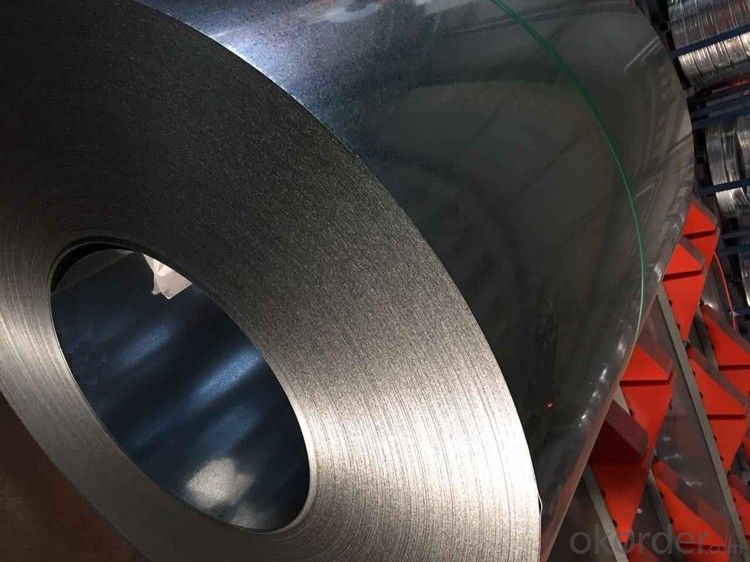
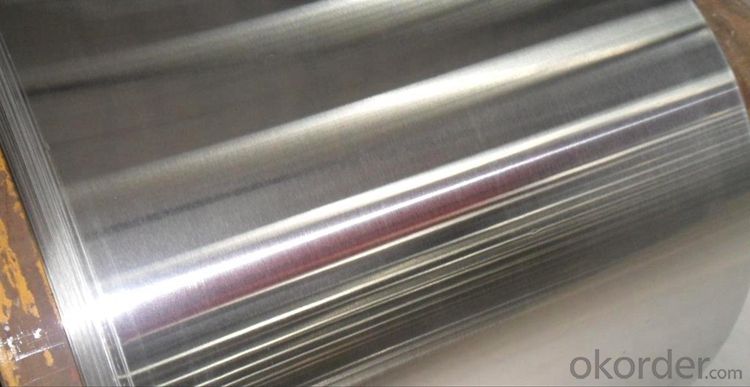
Packaging & Delivery for Stainless Steel Coils/Sheets:
Packaging Detail Standard export packing or following customer's demand
Delivery Time: Within 30-40 days after deposit or according to the order quantity
Export Markets for Stainless Steel Coils/Sheets:
Our target market is the international market. Every year we export most of products to countries like India, Pakistan, South Korea, Brazil, Australia, South Africa, Spain, Sri Lanka, Taiwan, Hong Kong, etc.
Our Service
1.High quanlity and reasonable price.
2.Customized on-demand.
3.Reasonable shipping and fast delivery.
4.Free sample.
FAQ for Stainless Steel Coils/Sheets:
Q:How to order?
A: Please send us your purchase order by email or fax .or you can ask us to send you a proforma invoice for your order .We need to know the following information for your order.
1) Shipping information-company name, street address, phone number, fax number, destination sea port
2) Product information – Quantity, Specification (steel type, thickness, width, surface finish)
3) Delivery time required
4) Forwarder's contact details if there's any in China
- Q: Can stainless steel sheets be used for decorative purposes?
- Certainly, decorative purposes can be served by stainless steel sheets. Renowned for its sleek and contemporary look, stainless steel is a widely preferred option for diverse decorative uses. Its applications span across interior design, architecture, and even art installations. Stainless steel sheets can be personalized to fashion distinctive patterns, textures, and finishes, rendering them ideal for crafting captivating and visually enticing decorative elements. Moreover, stainless steel boasts exceptional durability, corrosion resistance, and simple maintenance, making it a pragmatic choice for both indoor and outdoor decorative applications.
- Q: Are stainless steel sheets resistant to heat?
- Stainless steel sheets exhibit exceptional heat resistance due to their composition as a steel alloy rich in chromium. This high chromium content imparts impressive heat resistance properties, allowing stainless steel sheets to endure high temperatures without warping, deforming, or compromising their structural integrity. Consequently, stainless steel sheets find widespread use in various applications that demand heat resistance, including the construction of ovens, cookware, industrial equipment, and automotive components. Moreover, the superior oxidation resistance of stainless steel sheets ensures that they retain their appearance and properties even when exposed to elevated temperatures. Altogether, choosing stainless steel sheets proves advantageous when heat resistance is a critical requirement.
- Q: What are the benefits of using embossed stainless steel sheets in elevator doors?
- Embossed stainless steel sheets offer several benefits for elevator doors. Firstly, the embossed pattern adds a touch of elegance and sophistication, enhancing the overall aesthetic appeal of the elevator. Additionally, the embossed texture helps to improve grip and prevent slipping, ensuring safety for passengers. Furthermore, stainless steel is highly durable and resistant to corrosion, making it an ideal material for elevator doors that are subject to constant use and exposure to various environmental factors. Lastly, stainless steel sheets are easy to clean and maintain, saving time and effort in the long run.
- Q: Can stainless steel sheets be used for elevator ceiling panels?
- Stainless steel sheets are indeed suitable for elevator ceiling panels. Elevator interiors often feature stainless steel due to its durability, attractive appearance, and low maintenance requirements. Elevator ceilings adorned with stainless steel sheets exude a contemporary and polished vibe while being highly resistant to corrosion, stains, and scratches. Moreover, stainless steel is renowned for its hygienic properties and effortless cleaning, rendering it an ideal choice for elevator ceilings that prioritize cleanliness and hygiene.
- Q: What is the electrical resistivity of stainless steel sheets?
- The electrical resistivity of stainless steel sheets varies depending on the specific grade or alloy composition of the stainless steel. Generally, stainless steel has a relatively low electrical resistivity compared to other materials, such as copper or aluminum. The resistivity can range from approximately 6.9 x 10^-7 ohm-meters (Ωm) for austenitic stainless steel to 7.2 x 10^-7 Ωm for ferritic stainless steel. It is important to note that these values are approximate and can vary slightly based on factors such as temperature and impurities in the stainless steel.
- Q: What are the advantages and disadvantages of net drawing stainless steel users?
- Stainless steel wire drawing is on the market is more common of a conventional plate, that is, a straight line covered with the entire stainless steel plate. The 8K mirror panel is the same as glass mirror. Stainless steel wire drawing is through the abrasive belt sanding out of effect, relatively simple, and the speed is very fast. The 8K mirror panel requires more than 8 sets of machines, first coarse sand, and then eliminate the grinding head, flowers and other operations to complete mirror effect, relatively speaking, mirror is much more complicated, and the quality of the market is different.
- Q: How do you prevent pitting or crevice corrosion on stainless steel sheets?
- To prevent pitting or crevice corrosion on stainless steel sheets, there are several measures that can be taken: 1. Proper alloy selection: Choosing the right grade of stainless steel is crucial. Grades with higher levels of chromium, molybdenum, and nickel provide better resistance to corrosion. 2. Surface finishing: Ensuring a smooth and clean surface is essential to prevent corrosion. Rough surfaces or scratches can act as initiation sites for corrosion. Polishing or electropolishing the stainless steel sheets can help create a smoother surface. 3. Regular cleaning and maintenance: Regular cleaning using mild detergents and non-abrasive cleaners is important to remove contaminants that may corrode the stainless steel sheets. It is also necessary to avoid using chlorine-based cleaners or abrasive materials that can damage the protective oxide layer. 4. Avoiding stagnant conditions: Pitting and crevice corrosion are often intensified in stagnant environments. Ensuring proper drainage and avoiding the accumulation of stagnant water or debris can help prevent this type of corrosion. 5. Control of environmental factors: Stainless steel sheets should be protected from exposure to aggressive chemicals, such as chloride-containing solutions or acidic substances. Proper ventilation and humidity control can also help reduce the risk of corrosion. 6. Use of protective coatings: Applying protective coatings, such as paints or passivation treatments, can provide an additional layer of protection against pitting and crevice corrosion. 7. Regular inspections: Conducting regular inspections to detect any signs of corrosion early on can help prevent further damage. Prompt remedial actions, such as repairing damaged coatings or addressing any drainage issues, can prevent the spread of corrosion. By following these preventive measures, the risk of pitting or crevice corrosion on stainless steel sheets can be significantly reduced, ensuring their longevity and maintaining their aesthetic appeal.
- Q: How do you remove scratches from mirror-finish stainless steel sheets?
- To remove scratches from mirror-finish stainless steel sheets, you can follow these steps: 1. Clean the surface: Start by cleaning the stainless steel sheet with a mild detergent or stainless steel cleaner to remove any dirt, grime, or oils. Ensure the surface is completely dry before proceeding. 2. Assess the depth of the scratch: Determine the severity of the scratch by running your fingernail over it. If the scratch is superficial and can barely be felt, it can be easily repaired. However, deeper scratches may require professional assistance. 3. Remove minor scratches: For minor scratches, you can use a non-abrasive cleaner or toothpaste. Apply a small amount to a soft cloth or sponge and gently rub the scratched area in a circular motion. Rinse the area thoroughly and wipe dry with a clean cloth. 4. Utilize metal polish: If the scratch is still visible after using a non-abrasive cleaner, you can try using a metal polish specifically designed for stainless steel. Apply a small amount of polish to a clean, soft cloth and rub it onto the scratched area in a circular motion. Continue until the scratch fades away, then rinse and dry. 5. Deep scratch repair: If the scratches are deeper or more extensive, you may need to consult a professional stainless steel restoration expert. They can assess the damage and recommend the best course of action, which may involve sanding and polishing the surface to restore its original mirror finish. Remember, it is crucial to test any cleaning or polishing products in an inconspicuous area first to ensure they do not cause any damage or discoloration. Additionally, always follow the manufacturer's instructions when using any cleaning or polishing products.
- Q: What are the different types of edge profiles for stainless steel sheets?
- There are several different types of edge profiles that can be applied to stainless steel sheets, depending on the desired aesthetic and functional requirements. Some of these edge profiles include: 1. Square Edge: This is the most basic and common edge profile for stainless steel sheets. It features a straight, square edge without any additional shaping or finishing. 2. Beveled Edge: A beveled edge is achieved by cutting and shaping the edge of the stainless steel sheet at an angle. This profile adds a slight slope or chamfer to the edge, giving it a more refined and polished appearance. 3. Rounded Edge: Also known as a bullnose edge, this profile involves rounding off the sharp edges of the stainless steel sheet. It creates a smooth and curved edge that minimizes the risk of injuries from sharp corners. 4. Full Radius Edge: This edge profile involves creating a complete semicircular or rounded edge along the length of the stainless steel sheet. It offers a more pronounced curved appearance compared to a rounded edge. 5. Ogee Edge: An ogee edge profile features a double curve, with one concave curve followed by a convex curve. It adds an elegant and decorative touch to the stainless steel sheet, making it suitable for applications that require a more ornamental look. 6. Dupont Edge: This edge profile is characterized by a straight edge with a small bevel on the top and bottom sides of the sheet. It offers a sleek and modern appearance, often used in contemporary design applications. 7. Knife Edge: A knife edge profile involves sharpening the edge of the stainless steel sheet to create a thin, sharp edge. This profile is commonly used for applications where a precise and clean-cut appearance is desired. These are just a few examples of the different edge profiles available for stainless steel sheets. The choice of edge profile depends on the intended use, style preferences, and specific requirements of the project at hand.
- Q: Are stainless steel sheets resistant to scratches?
- In general, stainless steel sheets have a resistance to scratches. Their durability and strength make stainless steel highly impervious to scratching or denting. Nevertheless, it's crucial to acknowledge that no material is entirely impervious to scratches, and with regular use, stainless steel may acquire minor scratches over time. Nevertheless, these scratches are generally surface-level and can often be effortlessly eradicated or reduced through proper cleaning and maintenance. Furthermore, the degree of scratch resistance can fluctuate depending on the grade and finish of the stainless steel sheet.
Send your message to us
Stainless Steel Cold Rolled Stainless Plates NO.2B Finish
- Loading Port:
- Tianjin
- Payment Terms:
- TT OR LC
- Min Order Qty:
- 25 m.t.
- Supply Capability:
- 200000 m.t./month
OKorder Service Pledge
OKorder Financial Service
Similar products
Hot products
Hot Searches
Related keywords
